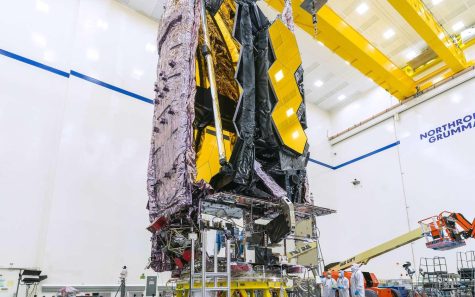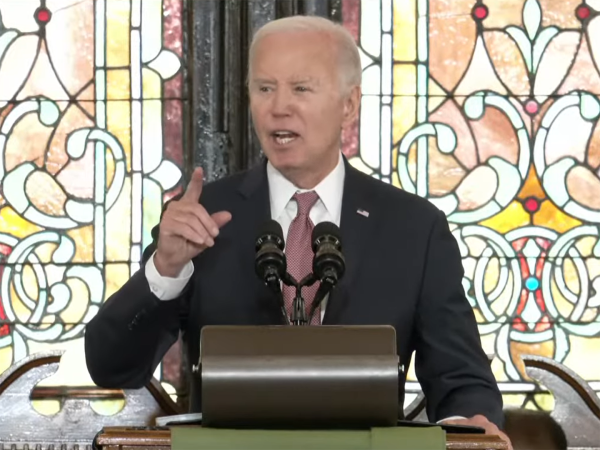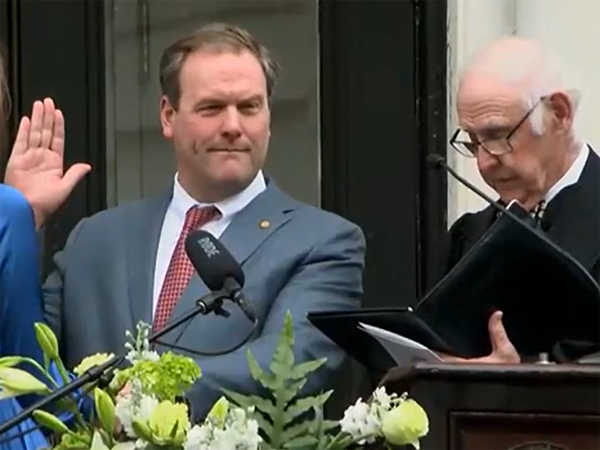What is NASA’s Newest Telescope?
An Explanation of the James Webb Space Telescope

Most people know about NASA’s current flagship space telescope, the Hubble Space Telescope, which launched in 1990. The Hubble gave us iconic pictures, a look into how and why stars explode, crucial information on black holes, and the now widespread belief that the universe is rapidly expanding due to something called “dark energy.” With the recent launch of the James Webb Space Telescope, however, NASA looks to expand upon these ideas and make our space exploration capabilities more powerful than they have ever been. The James Webb Space Telescope, named after the man, James Webb, who led NASA during the crucial Apollo program, has been in development since 2004, and finally launched from French Guinea on Christmas Day. Although the launch was successful, the telescope will now start its long journey to the 2nd Lagrange point, a spot over a million miles from Earth in which the gravitational pull is perfect for the telescope to stay in line with Earth as it rotates around the sun. The long overdue telescope was originally intended to be launched sometime in 2010 with less than a billion dollar budget, but after years of delays and budget increases, the price rose to 10 billion, and the official launch was December 24th of 2021. Now an entire field of scientists and researchers wait, as the possibilities of the James Webb Telescope could bring in a new era of space exploration.

The biggest part of the new telescope is the 21 foot wide golden mirror with 18 hexagonal segments. For telescopes, light is always the most important part because the concentrated light from the telescope turns into the actual images we see. The more light a telescope and its mirrors can bring in, the further out into the universe we can see, and in more detail. NASA claims that the James Webb Telescope will be able to bring in about 6 to 7 times more light than the Hubble, allowing it to take far deeper and more detailed images than the Hubble. Additionally, the Hubble would take weeks to look into a deeper fields of the universe and receive enough light to get a detailed image, but with the many technical advancements the new telescope has it will be able to the do the same in just a few hours, and oftentimes it will be able to focus on several different areas at once. One major difference between the Hubble and James Webb telescopes is that the Hubble detects visible light while the James Webb Telescope captures light in the near infrared and mid infrared wavelengths. This provides several advantages. First of all, some low energy systems that cannot be seen in the visible light, still radiate heat, allowing us to see them in the infrared. Additionally, infrared light’s long waves can oftentimes slip through clouds of dust and gas that the visible light waves bounce off of or between. Finally, in a process called cosmological redshifting, shorter wavelengths are stretched as the universe expands, meaning that the very far away stars are often much easier to see in infrared light.

Another key part of the new telescope is the tennis court sized, giant sunshield underneath the mirror. The telescope will need to be kept very cold, around negative 390 degrees Fahrenheit, in order to properly work. This is because since the telescope detects infrared light, or heat, it needs to be cold in order to not pick up background infrared “noise” from the actual telescope and be able to detect faint heat waves from far away. NASA compares it to sunscreen with an SPF of over 1 million, and the entire design was carefully crafted to ensure maximum protection and cooling. This includes 5 layers of an ultra light material called Kapton that are perfectly spaced apart in order to allow the heat absorbed by each layer to radiate out of the shield through the gap’s in the sunshield’s structure. NASA also used a special process called Thermal Spot Bonding that aims to minimize damage from meteoroids or other small space debris. The process keeps tears from expanding outside of its given grid, making sure that the rest of the sunshield will stay functional.

One more essential function of the James Webb Space Telescope is its folding and unfolding ability. Since the telescope is so big, it could not fit in any rockets, meaning that NASA had to get creative and create a folding function. The 18 hexagonal segments of the mirror fold together, and then will unfold and lock together once they reach space. Although, NASA has meticulously crafted every part of the telescope, the telescope still has 344 single points of failure, meaning that if just one of those 344 fails, the entire telescope will not work. Most of these points are in the deployment of the James Webb Telescope once it reaches space. The good news is that the deployment is almost completely finished, with the telescope’s sunshield already successfully deployed, and the mirror already successfully unfolded in space. Now the telescope is currently on a 29 day journey to the L2 spot where NASA can continue the 6 month process of gradually setting up and calibrating the telescope and its parts. Once the process is finally over, the telescope will be able to do things no other telescope has done before including seeing planets from just 250 million years after the Big Bang(we are 13.8 billion years past the Big Bang)which could give us insight into the planet creation process, and analyzing exoplanets for building blocks of life which could finally tell us if and where alien life is possible. The James Webb Telescope has ushered in a new era of space exploration, and hopefully it is the most exciting one yet.

















